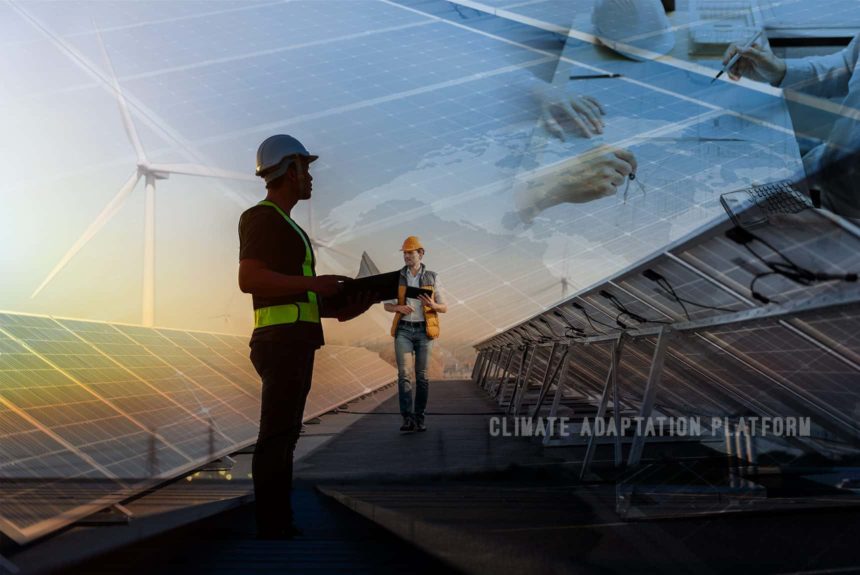The latest IPCC report highlights the threats of climate change, which says that humanity has reached a critical point where some of the impacts of climate change are now irreversible.
It also shows that the Earth is on track to see temperature rise exceed 1.5°C within this century, which breaches the 2015 Paris Agreement.
Scientists believe that the 1.5°C is the safe limit of global temperature rise because, beyond this, the world will face the worst impacts of climate change – deadly heatwaves, droughts, and water scarcity will affect some regions in the world. In contrast, other regions will see an increase in precipitation which can bring a more deadly flash flood, affecting infrastructure, human lives, properties, biodiversity’s, and ecosystems.
But climate engineers say it’s not too late but calls for urgent actions to avoid the worst impacts. Talking to The Guardian, Dr. Pep Canadell coordinating lead author of a chapter of the IPCC report and the director of the Global Carbon Project based at CSIRO, said the report showed humans were “still in the control cabin of the planet and climate system”, but may not be unless there was urgent action to cut emissions.
Diemar (2021), in his article, ” IPCC report highlights need for greater input from engineers on climate change,” points to the role of engineers in fighting climate change. It quotes Engineers Australia CEO Dr Bronwyn Evans, “As the creators of low emissions solutions and managers of our built environment, engineers are ready to meet the climate challenge. Engineers will play a vital role, not only in building resilience in a new climate but importantly, in cutting emissions to mitigate extreme climate change.”
An article from IEEE Spectrum, ” Engineers: You Can Disrupt Climate Change,” lays out five existing climate solutions that engineers can scale up to fight climate change. It notes the encouraging developments this last decade has seen that have helped lower emissions.
The cost of renewable energy -wind, solar, and even battery prices has plummeted, making scaling them up economically feasible to meet energy demands. Low prices of natural gas have caused the use of coal to drop by half and resulted in emissions in the U.S. to fall in 2019, a scenario forecasted in 2030 that happened sooner than expected. The shift to electric heat pumps for heating and the falling EV prices has also helped stave off emissions. But these developments are not enough to meet the carbon reduction to achieve the 1.5C warming limit. To reverse climate change, we need to bring CO2 levels down to 350 parts per million from our current 417 ppm levels, and to do this will require removing 2,000 gigatonnes of CO2 every year in the next 100 years.
Engineers will need to work on any existing technologies and scale them up, and doing so will also dramatically reduce cost. Aside from existing and nascent technologies, engineers should also utilize carbon sequestration solutions offered by natural carbon sinks such as forests, soils, and other places where carbon could stay put.
Fork & Koningstein (2021) also highlights the role of climate policy and carbon markets to expedite the engineering work of decarbonisation.
Climate policy “can make the costs of new energy technologies plummet and shift markets to low carbon alternatives,” while correct carbon prices can push high emitting industries to develop long-term plans, as demonstrated in the European Union (Fork & Koningstein, 2021).
The report enumerates the decarbonization challenges faced by engineers and the possible solutions that could be used to address these challenges ranging from existing technologies to the emerging ones such as developing hydrogen to fuel air travel, nuclear power from both nuclear fusion and nuclear fission to provide stable and reliable energy to critical infrastructure.
It also highlights the importance of carbon capture technology to remove CO2 levels from the atmosphere and return it to pre-industrial levels. To make carbon capture technology a viable solution would need a price breakthrough like what has happened with renewable energy, a sense of urgency, and outside-of-the-box thinking to utilize and develop nascent technologies.
Solving the climate crisis also involves the use of mathematics. The authors presented their calculation of the amounts of CO2 needed to remove from the atmosphere each year and the amount of energy humanity needs, then showed the number of solar power panels and nuclear power plants required to reverse the effects of climate change, as well as the cost of sequestrating CO2 in the atmosphere.
Read further by clicking the link below:
Source Citation:
Morton, A. & Readfearn, G. (2021, August 9). ‘Not too late’: Australian scientists call for urgent action to avoid the worst of climate crises. The Guardian. Retrieved from https://www.theguardian.com/australia-news/2021/aug/09/not-too-late-australian-scientists-call-for-urgent-action-to-avoid-the-worst-of-climate-crisis
Diemar, E. (2021, August 11). IPCC report highlights need for greater input from engineers on climate change. Create. Retrieved from https://createdigital.org.au/report-highlights-need-for-engineers-on-climate-change/
Fork, D. & Koningstein, R. (2021, June 28). Engineers: You Can Disrupt Climate Change. IEEE Spectrum. Retrieved from https://spectrum.ieee.org/engineers-you-can-disrupt-climate-change



Leave a Reply